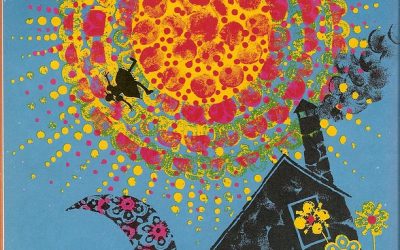Since its inception, humans have long had a complicated relationship with literacy. From the prehistoric Lascaux Cave Paintings (17,000 B.C.) to yesterday’s online print of the New York Times, we’ve come a long way in how we communicate. “Literacy is communication, not just reading and writing” (Bennett, 2016).
Throughout history, literacy’s influence has shaped cultures, religions, and civilizations. As the human species conceived and established communication patterns to speak, read and write—in culturally-accepted phonetic and alphabet systems—it is important to remember that there was a time when only primordial symbols were recorded to express experiences.
Literacy is communication, not just reading and writing.”
Peggy D. Bennett
In the academic world, the existence of humans can be divided into two expansive periods: historic (recorded history of human existence through the invention of writing systems), and prehistoric (the existence of humans prior to recording themselves). The evolution of human civilizations paints a continuous advancement in the value, function, and power of literacy.
When considering the culture of Western Music, it is often hard to distinguish a separation between the performance and study of music from its dependence on a traditional notation system. Ironically, this accepted system of traditional music notation, while logical, is burdened with limitations to expressively record a musical memory. If the notated record of a musical experience does not capture the musicality, then its value, function, and power to communicate must be questioned.
Often, conventional music notation is studied on an elemental level by pulling visual symbols, representing rhythm and pitch, out of their musical context for study. When this happens, sound—meaningful or not—becomes attached to a mathematical equation. What happens when we consider that complex traditional music notation has become so rigid that its study at an elemental level lacks value, function, or power?
Five Notions of Notation: A Sound to Symbol Approach
The acquisition of literacy—either for spoken language or musical experience—depends on the aural, visual, and kinesthetic perceptions of the learner. In other words, literacy skills evolve as aural perceptions of intangible moments in time are captured in visual representations. Like language, children learning to read and write music first experience sound through an aural perception. Within that auditory experience, kinesthetic and visual perceptions also collaborate. When considering the study of music literacy through the lens of a child, the approach should provide a necessary evolution of sounds to meaningful symbols in the context of a whole musical experience.
The SongWorks approach to music literacy for children provides just this opportunity: children’s perceptions and understandings evolve into traditional notation. These phases of understanding and “bridge literacy” retain an expressive musical memory with each step. In addition, perhaps the literacy skill may hold more value, function, and power when the child becomes musically responsive by attaching symbols to meaningful sounds rather than the reverse.
Music literacy through the SongWorks approach employs these five notions: clustering, mapping, ideographing, dotting, blended.
Clustering is what makes sound musical. Clustering is not necessarily only valuable in preparation for notation. The act of clustering sound is fundamental in our responsiveness to music.
Mapping, Ideographing, and Dotting are each kinesthetic, tactile, and tangible ways in which clusters of sound may be visually represented as notation—by the child!
Blended notation allows for various visual representations to occur within the context of a whole. Its very nature provides the opportunity for endless pathways of notation study in regard to musical sounds.
Each facilitates the study of music notation—conventional and otherwise—while preserving musicality. Unlike studying traditional notation, these experiences center on the child’s perceptions, understandings, and ideas. In addition to a teacher’s modeling, the child is the notation scribe of his/her musical experiences. The wisdom of providing these experiences is grounded on a set of principles.
Principles for Teaching and Learning Music*
- The major goal of music study is the development of a responsiveness to music.
- The musicality that is critical to music performance is just as important in music study.
- The fundamental skill in music behavior is listening.
- The way music sounds rather than how it looks guides the selection and presentation of patterns for study.
- A distinction exists between skills and concepts that are musically easy and those that are musically simple.
- Song provides direct involvement for making music and studying sound relationships.
This new column—IN PRACTICE—is dedicated to putting the SongWorks Principles for Teaching and Learning Music into practice, with a focus on using the five themes of notation to study music literacy. In the next 5 consecutive newsletters, educators will share specific, real-life examples of studying music literacy in their classrooms using the SongWorks approach. We hope their reflections will inspire you, as they share how their intentional use and unfolding of these windows into notation nurtures a playful environment, and what it does for their students’ learning.
Works Cited
*Bennett, Peggy D. & Bartholomew, Douglas R. (1999). SongWorks 2: Singing from sound to symbol. Belmont, CA: Wadsworth. Reprinted 2014 by SongWorks Press.
Bennett, Peggy D. (2016). Principles Class. SongWorks Music Literacy Course. Lecture and Study Sheets. St. Catherine University: St. Paul, MN.
More from this Series:
CLUSTERING (August 2017 Newsletter)
MAPPING (October 2017 Newsletter)
IDEOGRAPHS (January 2018 Newsletter)
DOTTING (March 2018 Newsletter)
BLENDED NOTATION (July 2018 Newsletter)
This article first appeared in the June 2017 Newsletter. It has been adapted for the “From the Archive” series.
Visit the Newsletter Archive for more articles like this and to subscribe.




